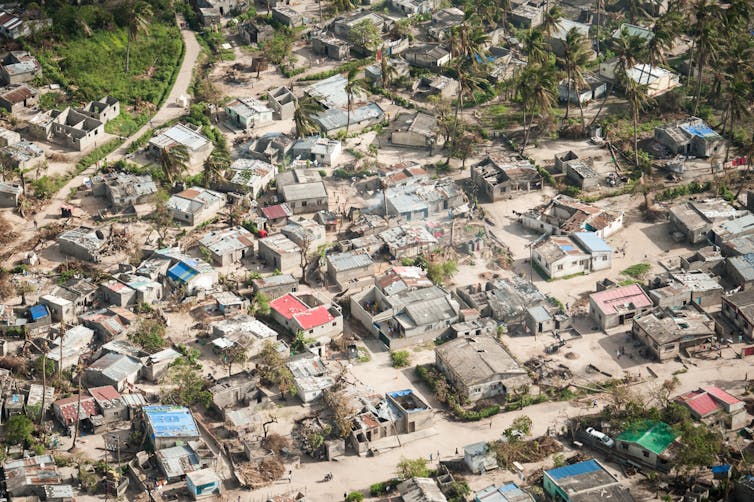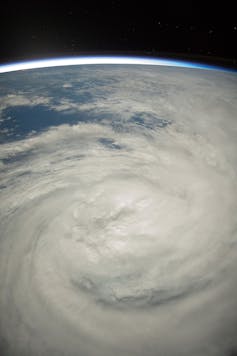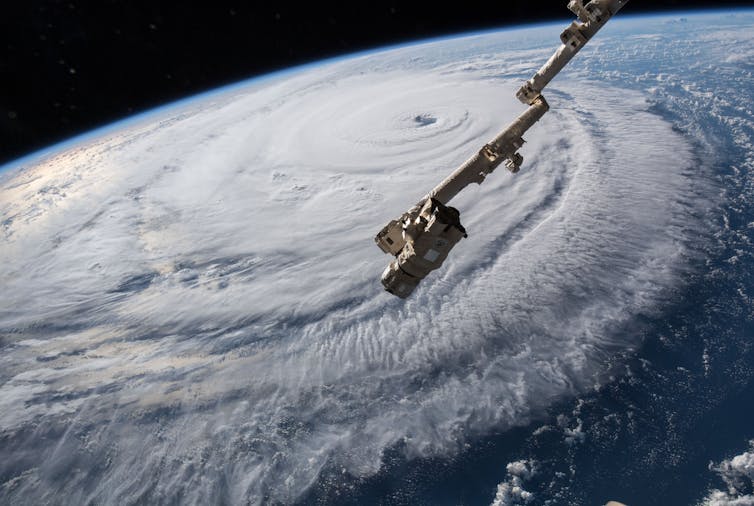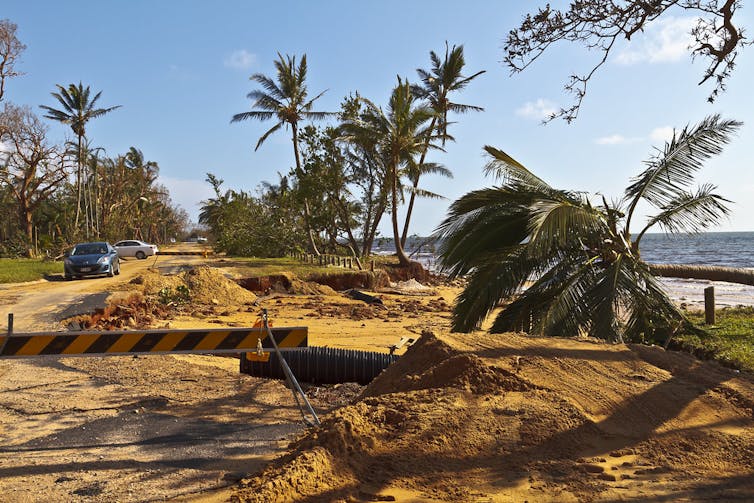I've always wondered: who calls cyclones their names?
- Written by Richard Wardle, Weather Services Manager, Queensland, Australian Bureau of Meteorology
This is an article from I’ve Always Wondered, a series where readers send in questions they’d like an expert to answer. Send your question to alwayswondered@theconversation.edu.au
Who calls cyclones their names? – Guy Mullin, Mozambique.
In the Australian region, the Bureau of Meteorology gives tropical cyclones their name. You can write to the Bureau of Meteorology to suggest a cyclone name, but it is likely to be more than a 50-year wait.
Tropical cyclones are named so we can easily highlight them to the community, and to reduce confusion if more than one cyclone happens at the same time. The practice of naming tropical cyclones (or storms) began years ago to help in the quick identification of storms in warning messages. Humans find names far easier to remember than numbers and technical terms.
 Aerial views of flooded areas following Cyclone Idai in March 2019.
EU Civil Protection and Humanitarian Aid Operations/flickr, CC BY-NC-ND
Aerial views of flooded areas following Cyclone Idai in March 2019.
EU Civil Protection and Humanitarian Aid Operations/flickr, CC BY-NC-ND
Read more: Explainer: 'bomb cyclones' – the intense winter storms that hit the US (and Australia too)
Clement Wragge began naming cyclones in 1887
 Tropical Cyclone Oma captured by NASA international space station.
NASA Johnson/flickr, CC BY-NC-ND
Tropical Cyclone Oma captured by NASA international space station.
NASA Johnson/flickr, CC BY-NC-ND
Now, people ask us all the time how we come up with the names for tropical cyclones. It started in 1887 when Queensland’s chief weather man Clement Wragge began naming tropical cyclones after the Greek alphabet, fabulous beasts, and politicians who annoyed him.
After Wragge retired in 1908, the naming of cyclones and storms occurred much less frequently, with only a handful of countries informally naming cyclones. It was almost 60 years later that the Bureau formalised the practice, with Western Australia’s Tropical Cyclone Bessie being the first Australian cyclone to be officially named on January 6, 1964.
Other countries quickly began using female names to identify the storms and cyclones that affected them.
 Naming cyclones helps people quickly identify storms in warning messages. Cameras outside the NASAA international space station capture Hurricane Florence in 2018.
NASA Goddard Space Flight Center/flickr, CC BY-SA
Naming cyclones helps people quickly identify storms in warning messages. Cameras outside the NASAA international space station capture Hurricane Florence in 2018.
NASA Goddard Space Flight Center/flickr, CC BY-SA
Read more: I've Always Wondered: How do we know what lies at the heart of Pluto?
How cyclone names are chosen
While the world was giving female names to cyclones and storms, International Women’s Year in 1975 saw Bill Morrison, the then Australian science minister, recognise that both sexes should bear the shame of the devastation caused by cyclones. He ordered cyclones to carry both male and female names, a world first.
These days the Bureau is responsible for naming tropical cyclones in the Australian region, with the names coming from an alphabetical list suggested by the Australian public. These names alternate between male and female. The Bureau of Meteorology receives many requests from the public to name tropical cyclones after themselves, friends, and even pets.
The Bureau cannot grant all these requests, as they far outnumber the tropical cyclones that occur in the Australian region.
 Trees on the side of the road at Mission Beach, North Queensland, in the aftermath of Cyclone Yasi, 2011. Cyclone Yasi formed in Fiji and maintained the name from that region’s weather agency.
Michael Dawes/flickr, CC BY-NC
Trees on the side of the road at Mission Beach, North Queensland, in the aftermath of Cyclone Yasi, 2011. Cyclone Yasi formed in Fiji and maintained the name from that region’s weather agency.
Michael Dawes/flickr, CC BY-NC
Read more: Curious Kids: What causes windy weather?
Cyclone Oma was named in Fiji
Cyclone names are reused, but when a tropical cyclone severely impacts the coast, or is deadly, like Debbie in 2017 and Tracy in 1974, the name is permanently retired for reasons of sensitivity.
If a listed name comes up that matches the name of a well-known person, or someone in the news for a sensitive or controversial reason, the name is skipped to avoid any offence or confusion.
When a cyclone forms in another region, say near Fiji or in the Indian Ocean, and then travels into the Australian region, the original name given by that region’s weather agency is kept, such as 2019’s Cyclone Oma, which came from Fiji.
Tropical cyclone Bessie was the first Australian cyclone to be officially named by the Bureau of Meteorology.A list of cyclone names around the world can be found here.
Authors: Richard Wardle, Weather Services Manager, Queensland, Australian Bureau of Meteorology
Read more http://theconversation.com/ive-always-wondered-who-calls-cyclones-their-names-116885



